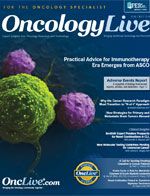The Immuno Learning Curve
With two drugs on the market and more agents in the pipeline, there's little doubt that immunotherapies targeting the PD-1/PD-L1 pathway will become a backbone of oncology treatment in the near future, perhaps replacing chemotherapy in some malignancies.
OncLive Chairman,
Mike Hennessy
With two drugs on the market and more agents in the pipeline, there’s little doubt that immunotherapies targeting the PD-1/PD-L1 pathway will become a backbone of oncology treatment in the near future, perhaps replacing chemotherapy in some malignancies.
The field is moving so quickly that even one of its chief architects, Jedd D. Wolchok, MD, PhD, was impressed that it took only three years for the dual checkpoint blockade pairing of nivolumab and ipilimumab to go from a dream concept to clinical findings for nearly 1000 patients.
With that level of interest and investment, these new therapies inevitably will be employed in clinical practice across a broad range of malignancies. For clinicians, then, a central question will be how best to administer these exciting agents to the patients they treat daily in their offices. To that end, our cover story in this issue of OncologyLive, “Practical Advice for the Immunotherapy Era Emerges From ASCO,” offers a postscript to the data presented at the 2015 ASCO Annual Meeting.
Amid the new findings highlighted at the conference, leaders in the immunotherapy field emphasized managing immune-related adverse events (iAEs) for patients taking these novel agents.
There is now a body of evidence concerning which iAEs patients are likely to experience depending on the drug, as well as the timing of when these side effects might surface during the course of treatment. Dr Wolchok has generously allowed us to reproduce his table of iAEs, which shows at a glance many of the most vexing potential effects.
As we learn how these therapies affect patients, however, oncology leaders also are developing a framework for managing those side effects. Michael A. Postow, MD, a colleague of Wolchok’s at Memorial Sloan Kettering Cancer Center, described key points of these best practices in a presentation at ASCO. “As these drugs expand to many different malignancies, doctors are going to be using these [agents] and they are going to have to learn how to do this,” Postow told us in an interview. In the fast-moving science of oncology medicine, the learning curve is always steep. Now oncology specialists will have to become conversant in the language of immunotherapy.
We’ve made it a priority to report developments in this field, along with the insights of research leaders. We hope you find these reports valuable. Please let us know what you would like to learn about these new therapies and, as always, thank you for reading.




